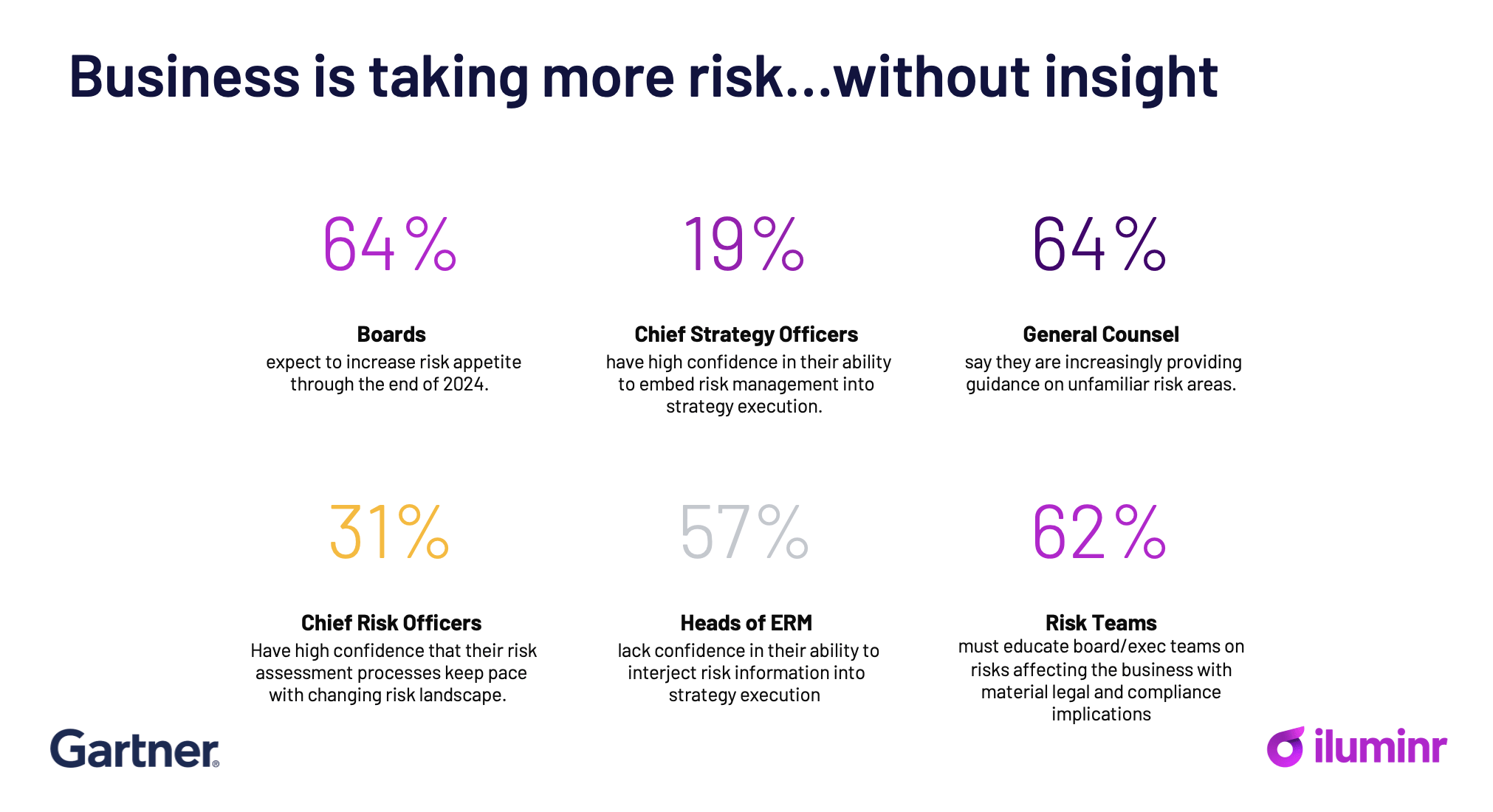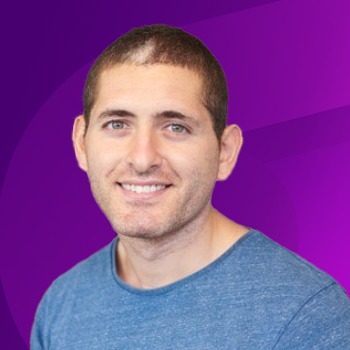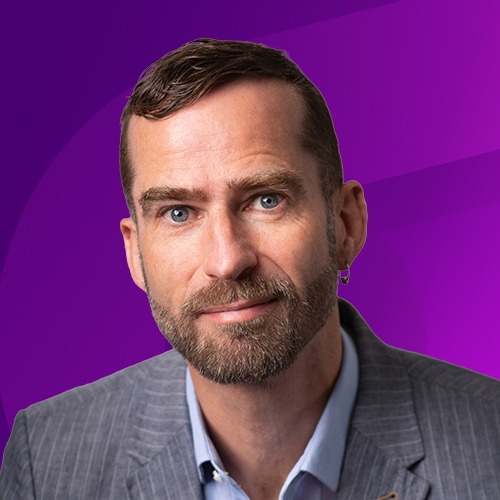Over the past three whirlwind months, we embarked on an incredible journey that took us from the iconic streets of San Francisco to the scorching desert landscapes of Phoenix, across the bustling metropolis of New York, and even spanning continents as we ventured down under to Australia, hopped across the pond to London, explored the Windy City of Chicago, and delved into the political heart of Washington, D.C.
Along the way, we’ve gathered invaluable insights and profound learnings that have enriched our perspectives, deepened our understanding of great risk and resilience culture, and left us with a sense of awe for the vast tapestry of experiences this world has to offer.
In this blog, we’ll distill the essence of our incredible journey, sharing the moments, discoveries, and lessons that have shaped us all.
 Photo: Matt Grossman tells of a real-life ‘Butterfly Effect’ – a one-man-in-a-garage operation at the center of a global disruption.
Photo: Matt Grossman tells of a real-life ‘Butterfly Effect’ – a one-man-in-a-garage operation at the center of a global disruption.
The Power of the ‘Aha’ Factor
Aha moments play a big role in building resilience. These moments, whether they happen during a wargame exercise or in real-life situations, can be turning points that prompt people to reevaluate their preparedness and adapt quickly to changing circumstances.
These moments of insight not only enhance the ability to bounce back from adversity but also foster stronger connections within communities, as shared aha experiences promote collective learning and problem-solving.
One of the fascinating aspects of “aha moments” is that what seems obvious in hindsight can be incredibly elusive when you’re initially grappling with a problem or concept. Often, it takes someone else’s fresh viewpoint or explanation to reveal the simplicity or brilliance of an idea that was previously hidden.
In our fast-paced world filled with distractions, it can be hard to tap into these connections. When distractions are minimized, whether through scenario thinking, structured wargaming, or simply by allocating dedicated time for solving for a specific situation, individuals are more likely to experience those “aha moments.”
While it’s essential to address immediate concerns and challenges, thinking about the distant-future as through structured exercise can stimulate creativity and generate innovative ideas. By considering how the world might evolve over time, individuals can identify opportunities and potential obstacles that they may not have noticed in a short-term perspective. Distant-future thinking encourages us to question assumptions, explore unconventional possibilities, and develop solutions that are not only relevant today but also robust and forward-thinking. It reminds us that our most brilliant ideas often lie beyond the horizon of our immediate concerns and limitations
Photo: Wargame to Gameday, Washington, DC, November 2023
Innovation = Measured Risk + Collaboration.
Marcus Vaughan opened Wargame to Gameday Washington DC with a reflection about the importance of risk-taking and collaboration when driving innovation.
‘Measured Risk’ was the key phrase. Certainly, we have seen the impacts of unchecked risk-taking earlier this year, a stark reminder that while innovation and risk can drive progress, there must be a balance that ensures stability and responsible decision-making. However, the same financial disasters that led to the demise of institutions, also point to a lack of integration between Strategy and Risk functions.

Source: The Top Risks Impacting Legal and Compliance in 2024, The Top 3 Priorities for Enterprise Risk Management Leaders in 2024, Gartner
Solomon Asch‘s experiments from the 1950s provide a glimpse into the social aspects of human behavior in decision-making and have significant implications in the context of innovation, risk-taking, and collaboration. These experiments highlight the powerful influence of social conformity on individual choices, even when the correct answer is obvious.
In Asch’s study, participants were confronted with a simple visual task where they had to identify which line matched a reference line. What’s remarkable is that when surrounded by a group of confederates who purposely gave incorrect answers, a substantial portion of the real participants went along with the group’s consensus, even when it was evident that the answer was wrong.

This phenomenon revealed our susceptibility to peer pressure and the strong desire to conform to group norms, even if it means making irrational decisions.
Innovation often requires horizon scanning and embracing unconventional ideas. Asch’s findings serve as a cautionary reminder that our proclivity to status quo can stifle innovation and increase risks.
To foster a culture of resilience, organizations must encourage dissenting viewpoints, create an environment where individuals feel safe to voice their ideas, and promote critical thinking that goes beyond groupthink. Recognizing the tendency to conform and actively seeking diverse perspectives can lead to more innovative solutions, improved risk mitigation, and breakthroughs.

Photo: Wargame to Gameday, Washington, DC, November 2023
Actions Speak Louder. Show. Don’t Tell.
“We cannot be what we cannot see.” – Marian Wright Edelman
We’ve been studying old maps our whole lives. This territory is new.
This means often we are communicating risks, ideas, and approaches that our teams have little to no familiarity with.
Research in psychology and behavioral science highlights the idea that people tend to respond better to prototypes or tangible examples rather than abstract discussions or descriptions. This phenomenon is often referred to as the “prototype effect” or “concreteness effect.”
Here are a few strategies that will help you apply this in the context of your initiative:
When training, use concrete instead of abstract messaging: Studies have shown that people are more likely to remember and engage with concrete and specific information compared to abstract or vague concepts. For example, when presenting a scenario, using video, imagery, or a vivid, real-world example tends to be more effective in conveying the message and gaining the interest of your audience.
When asking people to make a decision, provide tangible options, such as playbooks: Research on decision-making processes suggests that individuals tend to make better choices when presented with tangible options, such as procedures or playbooks. Having a physical representation of the event as it is playing out allows people to assess the attributes, benefits, and drawbacks more effectively, leading to more informed decisions.
When sharing information, leverage media and storytelling and ask for engagement: When communicating information with others, using concrete examples or imagery, and ask them to perform a brief task to assess their understanding. People connect with and remember stories, visuals, and real-world engagement.
Incorporating simulations and concrete elements into discussions and presentations can enhance understanding, engagement, and decision-making. Whether in Risk, Resilience, Response, or Compliance, the use of prototypes helps bridge the gap between abstract ideas and practical application, facilitating more effective communication and interaction with individuals.

Photo: Angles, Alpes-de-Haute-Provence, France
Build to Withstand the Unexpected.
“But first, before anyone else, regular people were on the scene, saving one another. They did incredible things, these regular people. They lifted rubble off survivors with car jacks. They used garden hoses to force air into voids where people were trapped. In fact, as in most disasters, the vast majority of rescues were done by ordinary folks.
However, “Whether they are at an airline or at a command center, experts will err on the side of excluding the public, as we have seen. If they can avoid enrolling regular people in their emergency plans, they will. Life is easier that way, until something goes wrong.
Since 9/11, the U.S. government has sent over $23 billion to states and cities in the name of homeland security. Almost none of that money has gone toward intelligently enrolling regular people like you and me in the cause. Why don’t we tell people what to do when the nation is on Orange Alert against a terrorist attack—instead of just telling them to be afraid?”
– The Unthinkable, Who Survives When Disaster Strikes and Why, Amanda Ripley
Successful businesses must be built with resilience by design, incorporating strategies and practices that enable them to withstand unforeseen challenges and disruptions. Great risk management is democratized and federated, with visibility across the organization.
This means proactive risk assessment, scenario planning, and the cultivation of a resilient corporate culture through capability building.

The Solarwinds Cyberattack is a case study on the relationship between risk and fiduciary duties, this time with catastrophic consequences.
Demonstrating resilience before adversity strikes builds trust among stakeholders, including customers, investors, and employees, and positions a business to navigate challenges with confidence and adaptability when the need arises.
We heard numerous examples over the course of our roadshow, from companies routinizing microsimulations and wargames into the operating fabric of their organization at all levels, to leveraging microsimulations with key vendors, to working with boards and executive teams to rigorously test business strategy against varied scenarios.
In essence, resilience by design is a strategic imperative in today’s fast-paced and uncertain business environment, fostering sustainability and long-term success.

Photo: Breakout, Wargame to Gameday, London
Always Room at the Table.
“The secret of leadership is simple: Do what you believe in. Paint a picture of the future. Go there.”
― Seth Godin, Tribes
The science of engagement and empowerment in building a resilience culture cannot be overstated. Engagement means involving every member of an organization in the process of identifying and addressing risks and challenges. When individuals are engaged, they become more aware of potential threats, more committed to proactive measures, and more likely to collaborate effectively in times of crisis.
In a resilient culture, engagement extends beyond top-level management to include employees, third parties, stakeholders, and the broader community, creating a shared sense of responsibility for resilience.
Empowerment is equally crucial, as it entails providing individuals with the knowledge, tools, and authority to take ownership of resilience initiatives. Empowered individuals have the confidence to make decisions, innovate, and take action when faced with unexpected disruptions. In a resilient culture, empowerment means fostering a sense of agency, where employees or community members feel they can contribute meaningfully to risk assessment, mitigation, and recovery efforts. This not only enhances an organization’s ability to adapt to challenges but also promotes a culture of continuous improvement and innovation.
Together, engagement and empowerment form the bedrock of a resilience culture. They enable organizations and communities to tap into the collective intelligence and resourcefulness of their members, resulting in a proactive and adaptive approach to risk management.

Photo: Deepfake Cyber Attack Microsimulation
A Capability for the Test of Time.
The parable of the architect underscores the significance of our endeavors and the work we do – Risk or Resilience, Security or Compliance, Board Member or Executive Leader – building a resilient world.
“The architect, desperate to retire, is implored to design one final house. Since his heart is not fully in it, he cuts corners.
Only at the end of the project does he learn that the firm that commissioned it, built the house for him.
If he only know he was building his own house he would have designed it with maximal effort and pride.”
– Chop Wood, Carry Water, Jason Medcalf
Our work in risk and resilience is not just a profession; it is a sacred trust, a mandate to forge the very foundation upon which the future stands, resilient and unwavering.
Author
Paula Fontana
VP, Global Marketing
iluminr















